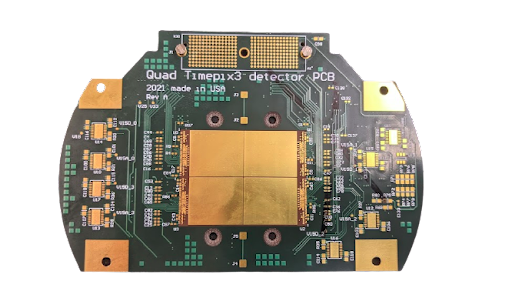Focusing Optics X-ray Solar Imager

FOXSI-4 is the most recent generation of FOXSI-sounding rockets. The FOXSI-4 mission will launch from Alaska in March 2024 as a part of NASA's first sounding rocket flare campaign, with fellow rocket payloads Hi-C FLARE and SNIFS. FOXSIs home institution is the University of Minnesota, and the PI for the campaign is Dr. Lindsay Glesener.
Sounding rockets are great tools for solar physics. They are generally built from a solid-fueled rocket motor staked below the payload/experiment which extends to near the nose of the rocket. When the rocket launches, it travels upwards and is pointed at the target to begin taking data. After 30 minutes roughly, the payload floats back down via parachute for collection, and if all goes well, we can reuse it again for a future mission.

For FOXSI-4, I work on the Quad-Timepix3 detector, which will be one of many detectors positioned on the rocket. Hard X-ray detectors for solar physics are essential as high energy solar activity--such as flares--will emit X-rays. As a junior specialist working on these detectors, my responsibility includes characterization and calibration, PCB development, design, and delivering a working assembly to be fixed to the rocket's focal plane. I work primarily in python, developing software to read and visualize data. Control of the detector's data acquisition is scripted in both python and C/C++. When designing mechanical and electrical components, I heavily utilize open-source engineering software such as KiCAD or pspice simulations.
